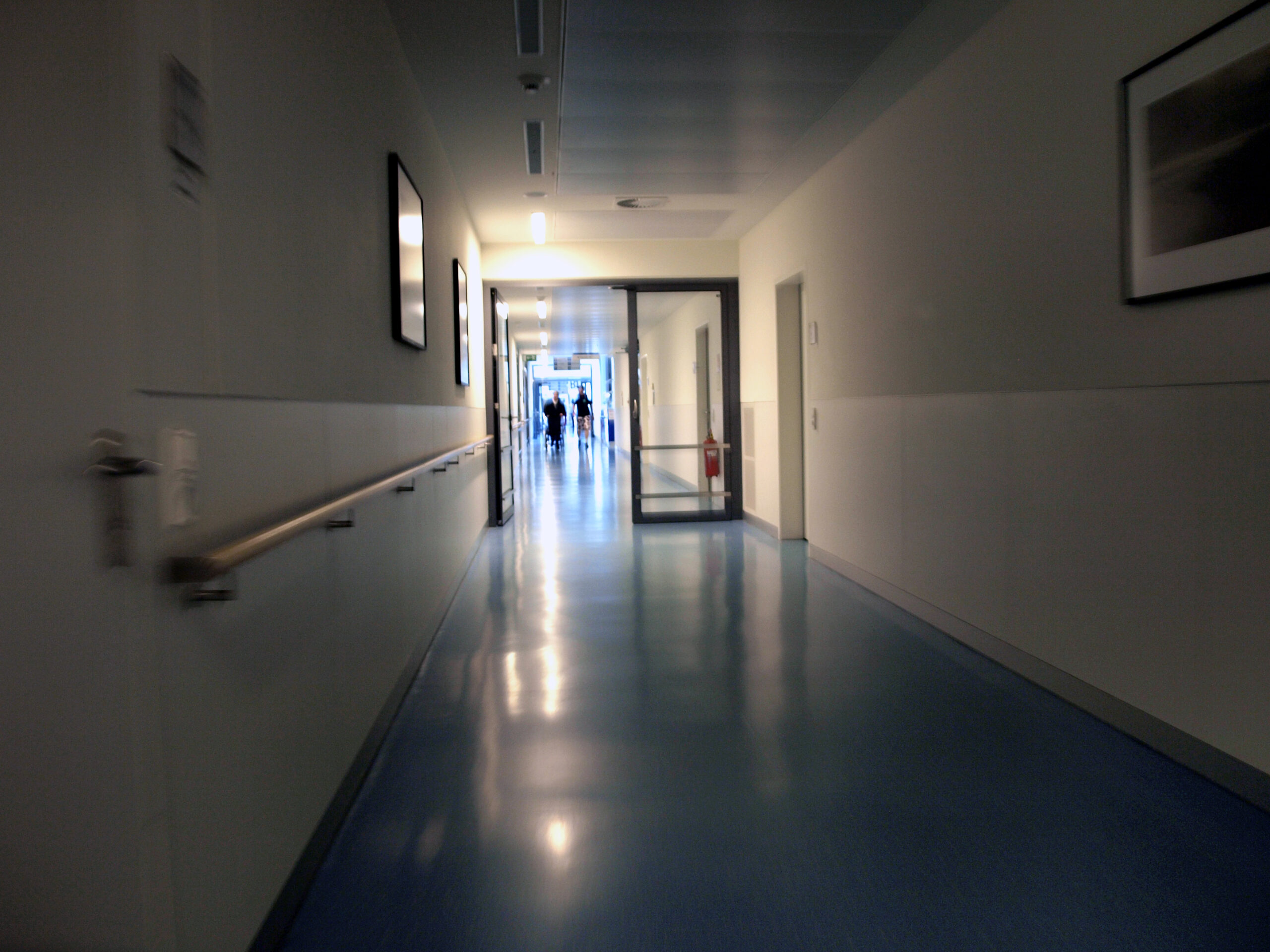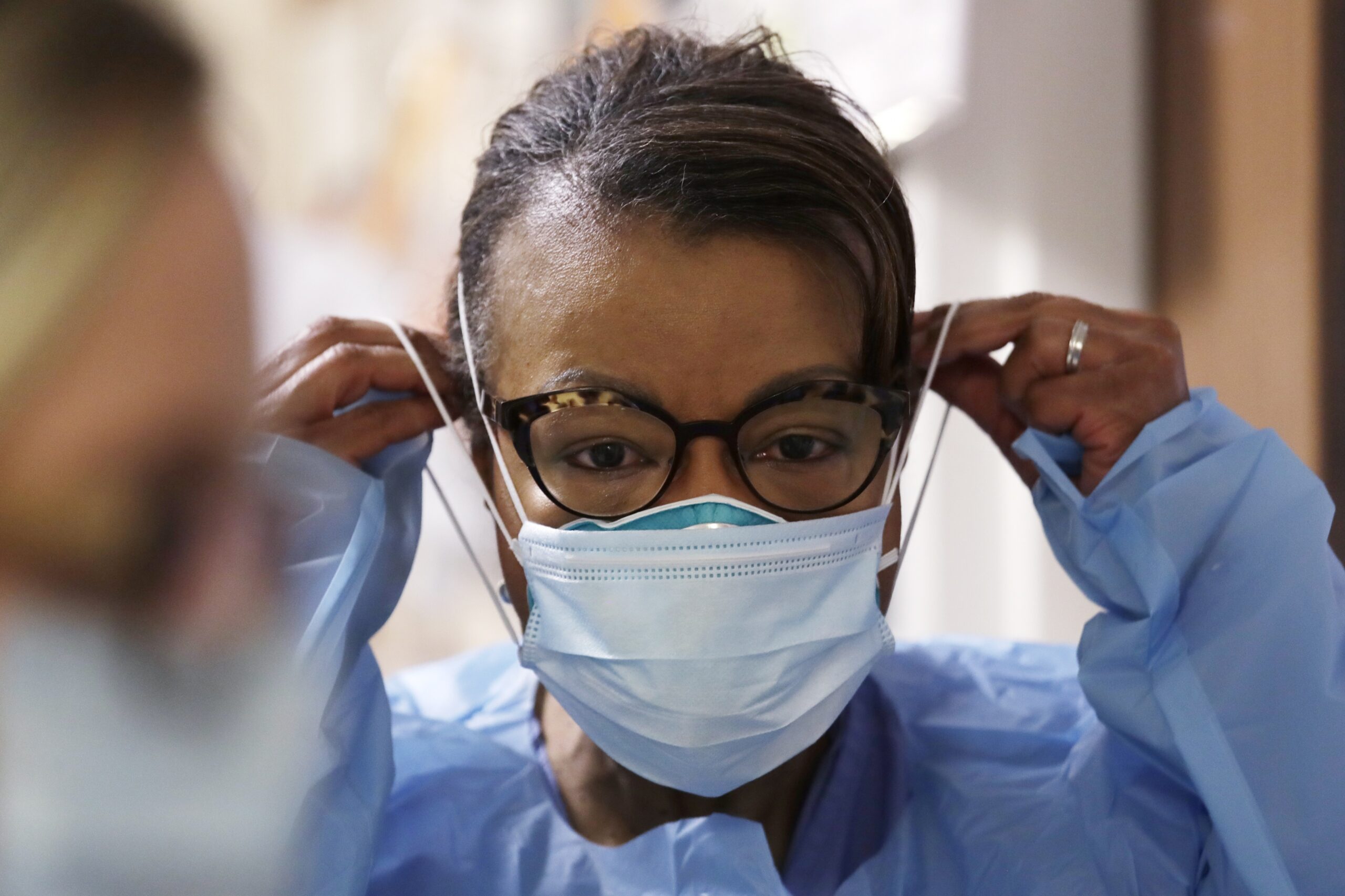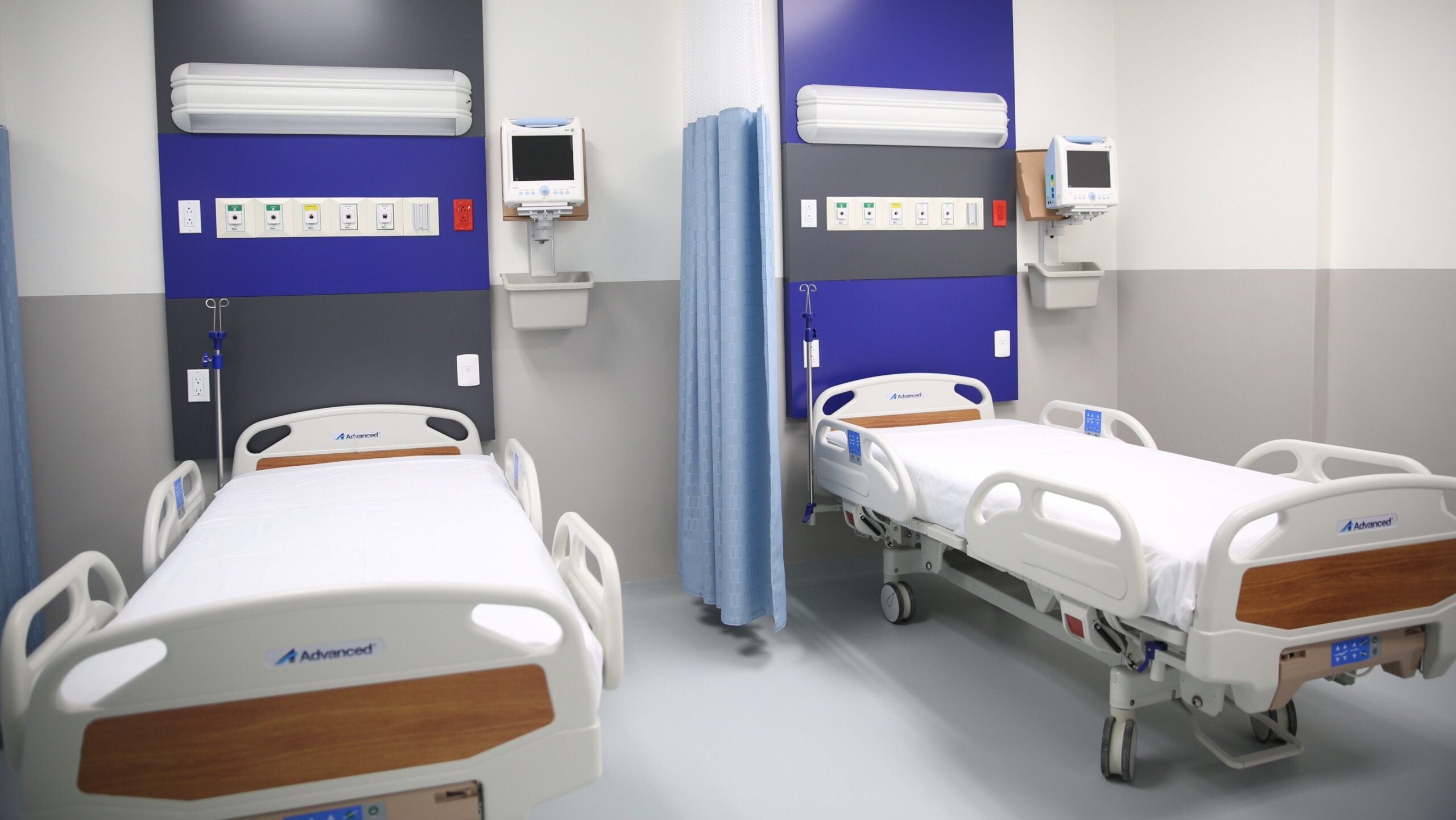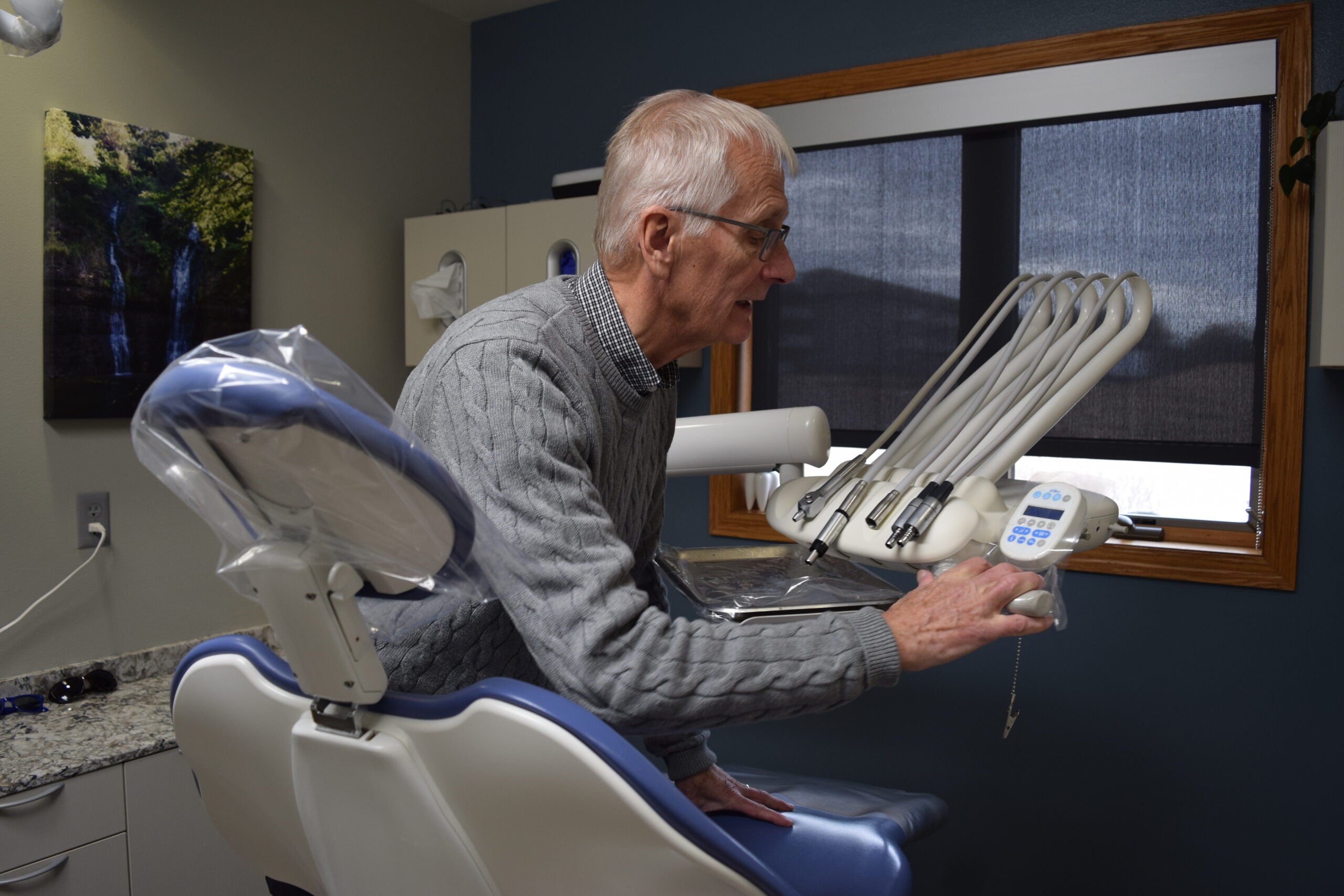Masks for everyone. Patient check-ins by phone. COVID-19 testing for everyone undergoing even routine procedures, regardless of their symptoms.
After shutting down many services and postponing all but the most urgent procedures for two months or more, hospitals across Wisconsin have begun the process of opening back up. Facilities are calling back or reassigning workers who had been working from home or were temporarily laid off. But hospital services and facilities look different in the COVID-19 era, and some of the changes they’ve put in place might be around for years to come.
For rural hospitals in particular, managing the process of reopening is both fraught and necessary. In the early days of the pandemic, hospitals braced for a surge in infections that could risk overwhelming their services. For rural Wisconsin, that surge didn’t come.
News with a little more humanity
WPR’s “Wisconsin Today” newsletter keeps you connected to the state you love without feeling overwhelmed. No paywall. No agenda. No corporate filter.
But after the state Supreme Court ordered an end to Wisconsin’s stay-at-home order earlier this month and as the beginning of the tourist season has more people traveling throughout the state, rural hospitals are reopening while still trying to protect against the very real risk of new outbreaks.
Figuring out how to safely reopen “is exponentially more complicated than when we had to shut down back in March,” said Dr. Gregory Brusko, chief clinical officer of Ascension Wisconsin, a hospital system that operates in Milwaukee, the Fox Valley, central Wisconsin and the Northwoods.
Hospitals were among the many businesses that shut down many of their services in mid-March as part of the worldwide effort to slow the spread of the pandemic. They canceled or postponed many non-emergency services for patients, stocked up on personal protective equipment and reviewed safety procedures for staff and patients.
“We had to prepare for the worst-case scenario, because no one knew what was going to happen,” said Dr. Susan Turney, CEO of Marshfield Clinic, a health system that includes clinics and hospitals across rural Wisconsin.
Marshfield Clinic’s hospitals in Marshfield and Eau Claire are at about 75 percent of their pre-COVID volumes now, Turney said, from closer to 50 percent a week ago. Brusko said Ascension facilities in the Northwoods will be at around 50 percent capacity this week, and they’re looking to increase capacity in two-week increments.

Brusko said the system can stay on that trajectory “as long as they can manage their (personal protective equipment), as long as we don’t have operational flow issues (and) as long as we can maintain safety and social distancing as our volumes start to increase.”
The new normal at these hospitals includes coronavirus testing for all patients ahead of even routine, unrelated procedures, because some carriers of COVID-19 are asymptomatic. Hospitals physically separate the areas where COVID patients are treated from those where they conduct routine testing, surgeries or other procedures. And everyone, patient or staff, is required to wear a mask.
Wearing a mask “dramatically reduces the risk of transmission,” Brusko said. “There’s no debate.”
Job Losses Hit Rural Health Providers, And Some Jobs Are Changing
Western Wisconsin Health is a small hospital in St. Croix County. It took a severe financial hit at the onset of the crisis, and will lose money in May, said Alison Page, the hospital’s CEO. But it hasn’t furloughed workers and it hasn’t laid anyone off. That’s because the hospital, which employs fewer than 500 people, was eligible for and received funding from the federal Paycheck Protection Program passed in late March.
“We’ve reassigned people,” Page said. “We have a fitness center; it’s shut down. Those people are now on the housekeeping team. They’re checking symptoms at the front door. They’re helping wash isolation gowns. … We are keeping everyone employed, and we intend to do that.”
[[{“fid”:”1251056″,”view_mode”:”full_width”,”fields”:{“alt”:”‘Heroes work here’ sign honoring health care workers in Massachusetts”,”title”:”‘Heroes work here’ sign honoring health care workers in Massachusetts”,”class”:”media-element file-full-width”,”data-delta”:”3″,”format”:”full_width”,”alignment”:””,”field_image_caption[und][0][value]”:”%3Cp%3EA%20masked%20pedestrian%20passes%20a%20sign%20honoring%20health%20care%20workers%20in%20the%20window%20of%20the%20Massachusetts%20General%20Hospital’s%20North%20End%20Waterfront%20Health%20center%20during%20the%20coronavirus%20pandemic%2C%20Tuesday%2C%20May%2012%2C%202020%2C%20in%20the%20North%20End%20neighborhood%20of%20Boston%3Cem%3E.%20Steven%20Senne%2FAP%20Photo%3C%2Fem%3E%3C%2Fp%3E%0A”,”field_image_caption[und][0][format]”:”full_html”,”field_file_image_alt_text[und][0][value]”:”‘Heroes work here’ sign honoring health care workers in Massachusetts”,”field_file_image_title_text[und][0][value]”:”‘Heroes work here’ sign honoring health care workers in Massachusetts”},”type”:”media”,”field_deltas”:{“3”:{“alt”:”‘Heroes work here’ sign honoring health care workers in Massachusetts”,”title”:”‘Heroes work here’ sign honoring health care workers in Massachusetts”,”class”:”media-element file-full-width”,”data-delta”:”3″,”format”:”full_width”,”alignment”:””,”field_image_caption[und][0][value]”:”%3Cp%3EA%20masked%20pedestrian%20passes%20a%20sign%20honoring%20health%20care%20workers%20in%20the%20window%20of%20the%20Massachusetts%20General%20Hospital’s%20North%20End%20Waterfront%20Health%20center%20during%20the%20coronavirus%20pandemic%2C%20Tuesday%2C%20May%2012%2C%202020%2C%20in%20the%20North%20End%20neighborhood%20of%20Boston%3Cem%3E.%20Steven%20Senne%2FAP%20Photo%3C%2Fem%3E%3C%2Fp%3E%0A”,”field_image_caption[und][0][format]”:”full_html”,”field_file_image_alt_text[und][0][value]”:”‘Heroes work here’ sign honoring health care workers in Massachusetts”,”field_file_image_title_text[und][0][value]”:”‘Heroes work here’ sign honoring health care workers in Massachusetts”}},”link_text”:false,”attributes”:{“alt”:”‘Heroes work here’ sign honoring health care workers in Massachusetts”,”title”:”‘Heroes work here’ sign honoring health care workers in Massachusetts”,”class”:”media-element file-full-width”,”data-delta”:”3″}}]]
The health care system is a huge employer in Wisconsin. According to the U.S. Bureau of Labor Statistics, there are about 176,000 “health care practitioners” in the state, including physicians and nurses and another 134,000 “health care support” positions, including medical assistants. And in rural areas, a local hospital might be the single largest employer, providing some of the best-paying jobs in the region.
Marshfield Clinic, which itself employs more than 10,000 people, in April announced furloughs of employees who weren’t working directly on COVID-19 response.
“Health systems have had to make some really tough decisions when the revenue isn’t coming in and there just isn’t work for everybody who had been fully employed before this started,” Turney said. “As we ramp up, we are bringing people back as needed.”
Turney said rural hospitals were already “in crisis” even before the pandemic, with thin profit margins and aging, economically disadvantaged patients. The pandemic has intensified that crisis for many. An April report from Becker’s Hospital Review found 354 rural hospitals were at high risk of closing, including five in Wisconsin.
At Western Wisconsin Health, Page said she believes May will represent the worst financial month for the hospital.
“We’re hoping in June we can hit a safe plateau where we will be financially solvent,” she said. “The stimulus money and the (Paycheck Protection Program) money will help us get through this.”
Reopening Cautiously, With Concern For Future Surges
If rural hospitals closed many services down in March to prepare for the worst-case scenario of a statewide outbreak of COVID-19, they’re now reopening with no certainty that new outbreaks won’t strike in the future.
“When this all started,” Page said, “a lot of our staff members were scared to death.”
St. Croix County has had a total of 74 positive cases and no deaths yet, according to state data. The small hospital hasn’t been overwhelmed. Page stresses that they’ve put massive resources into training and preparation. But she and other executives interviewed for this story say it’s still a challenge to stay vigilant about the possibility of new outbreaks this summer.
“You worry,” Turney said. “Are you going to have what you need if a surge should develop?”
Turney said her husband recently had knee surgery at Marshfield Clinic — exactly the sort of non-emergency procedure that hospitals were deferring just weeks earlier. She said it’s a marker of her own confidence that the facility is safe.
Brusko, too, said an important part of reopening is building the community’s confidence that hospitals and clinics are safe, and that routine health care can resume.
But it’s with great caution that hospitals are resuming that care, and with extensive new procedures to sanitize and protect patients and staff. And health officials everywhere are aware that the next serious outbreak is still possible at any time.
“We provide medical care to three different nursing homes,” Page said, by way of example. “All it would take is one nursing home to have (COVID-19) start spreading and that would overflow our hospital.”
Wisconsin Public Radio, © Copyright 2026, Board of Regents of the University of Wisconsin System and Wisconsin Educational Communications Board.




